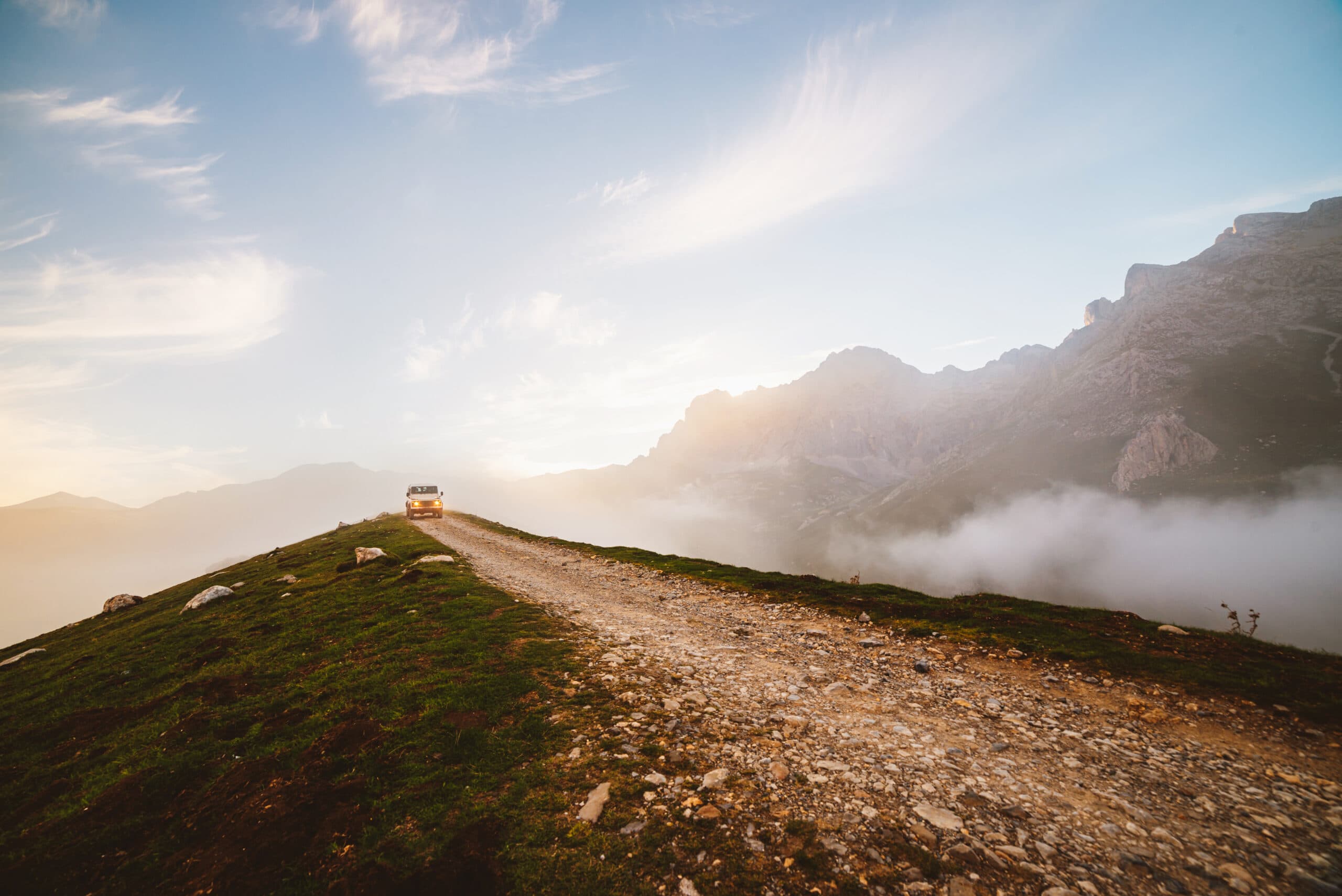
Off-road – find out how to start your adventure
Driving a 4×4 is great fun for being a driver. But, leaving the main road makes it even more exciting. No limits, dirt, sweat, wind in your hair, and happy tears – that’s what you can expect off-road. But how do you start this amazing adventure? Join us and fasten your seatbelt, as we take you through the wild jungle of information to the safe highway of knowledge.
What should an off-road car have? Without this, you won’t go far
It’s hard to imagine off-roading without a car. And not just any car, but one that’s properly equipped. Does this mean that to go off-roading, you need to buy a car just for this activity, and then make expensive modifications? The answer is of course: yes and no. It depends on what off-road goals and challenges you set for yourself. But let’s focus on the present, where you’re just excited about seeing undiscovered lands in a new light.
Right now, you’re probably at the beginning of your off-road journey, or more precisely – off the beaten path. Maybe on a Friday afternoon, after a week in the office, you dream of leaving the predictable city streets for more unexpected paths. In any case, you expect that safety and comfort of daily driving will go hand in hand with the durabillity of the vehicle. So, we want to present you components that come factory-installed in 4×4 cars and make a good base for an off-road vehicle, but do not yet make – an off-road monster. Make sure the model you choose has them.
Vehicle frame – a solid base on off-road
For many, the frame is what defines an off-road vehicle. However, its presence is not always necessary and constant. Most modern passenger cars, including SUVs, have a unibody construction. Indeed, many classic off-road vehicles lack it, including some models of the legendary Jeep Cherokee, such as the XJ, WJ, ZJ.
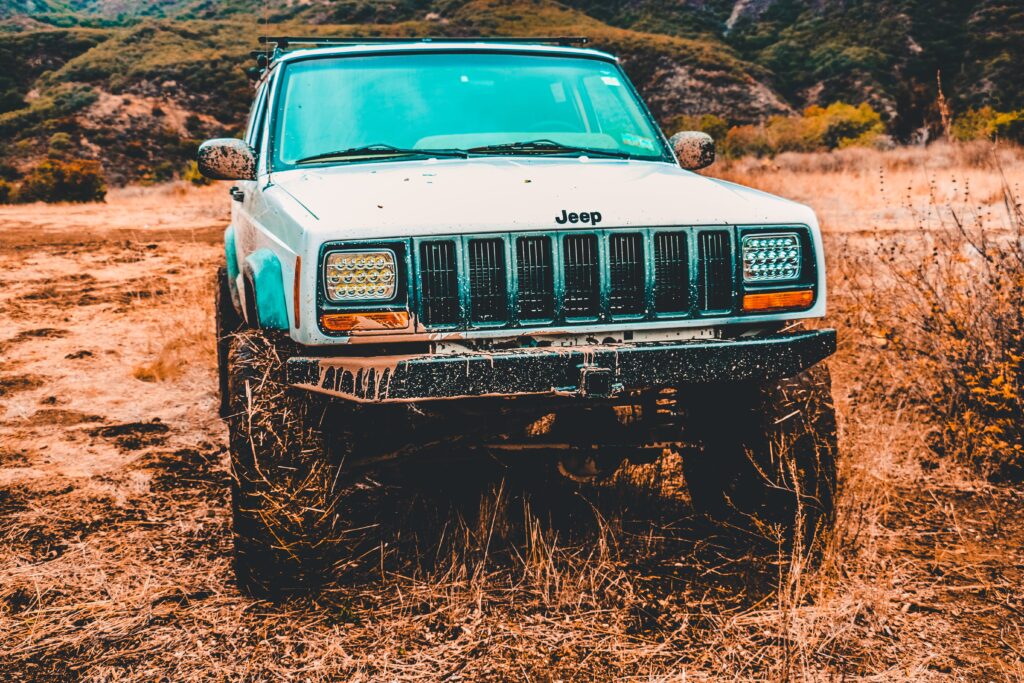
This frameless solution in challenging terrain, where the body is subjected to many hard tests and twists, can mean a higher risk of damage and certainly less durability and safety. The frame, however, reduces all stresses and loads on the “body” of the car. It also makes later modifications easier and allows for the attachment of a winch or towing hooks.
Gear reducer – let’s shift to a lower gear
A more important component of an off-road vehicle than the frame itself is the reducer (reduction gearbox). Its presence in the drive system is basically a guarantee that the vehicle model was created for driving in very difficult terrain. Its job is to reduce and shorten gears when the engine cannot provide enough revolutions at low gear. In practice, the gear reducer increases the driving force in the wheels at the expense of overall speed. You’ll appreciate its functionality especially on difficult climbs and driving on sandy terrain, where high pulling capabilities of the car at low speed are needed.
Differential lockers – around the corner to the goal
Driving in difficult terrain can throw various obstacles under… the tires. Literally. So, you must be prepared for a situation where at least one of your wheels hangs in the air. And as you might guess, due to the differential mechanism, all the drive will be transferred there, where it’s lighter. That’s why in 4×4 off-road vehicles, a differential locker is useful.
Turning it on locks the axle connection in the differential, causing the drive to be transferred equally to each wheel, regardless of their position. Thanks to this, even if one of them loses contact with the ground, you won’t be stuck for good. This definitely makes it easier to move in deep ruts, sand, and mud, and also allows you to get out of a strong skid.
4×4 drive – because you need four for off-road
Off-roading is a discipline where more often means better. The same goes for the drive system of an off-road vehicle. Of course, in the version with all four wheels. Currently, we can encounter various technical solutions of 4×4 drive systems. From more traditional ones, like fixed or manually engaged, to ultra-modern ones fully controlled electronically. Classic ones are characterized by simpler and more solid design, as well as higher reliability and better control over the way they work, while modern ones have full automation in choosing the best type of drive and power distribution.
On the road to off-roading. A few words about off-road tires
When we’ve got the initial characteristics of a good starter car out of the way, we must move on to absolutely necessary improvements to its equipment. Even the most off-road vehicle among off-road vehicles won’t perform well in action on poor and unsuitable tires. On road tires, it will at best slide and bury itself. What is the most important in off-road tires?
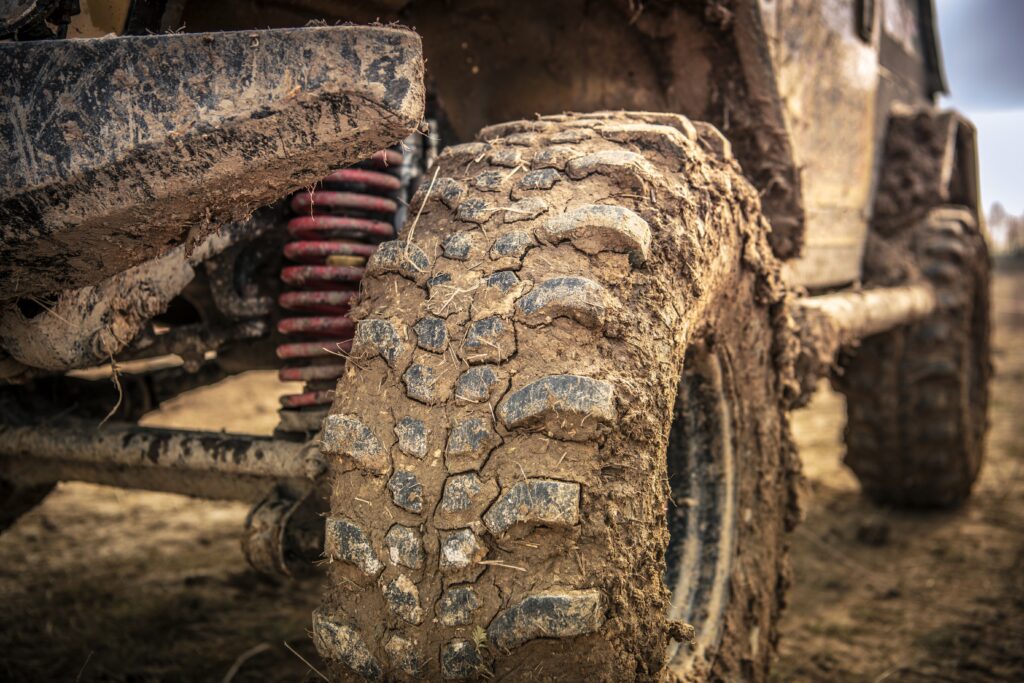
Tread
In driving on any unpaved road, a precisely profiled and high tread with a wide spacing of rubber blocks is crucial. As a rule – the larger it is, the deeper into the terrain you’ll go. Though in this way, naturally less tire surface contacts the ground (in the case of roads), it allows the car to better dig into demanding terrains instead of sliding over them.
Tire type
Tires designed for off-roading also have their appropriate types. Different tire characteristics and tread depths are needed depending on the surface you plan to drive on. Thus, in the tire market, you’ll find those labeled:
AT (All Terrain) – the most universal tire type. Works well on hardened surfaces and gravel roads. Models with snow approval available. Performs worse in mud, marshes, and clay terrain.
MT (Mud Terrain) – excellent for crossings as well as muddy and wet terrains. Resistant to driving with low pressure. Will perform worse in snow, where they have significantly lower traction. Similarly, on wet asphalt. They will be fine on a dry road unless you mind their high noise.
RT (Rugged Terrain) – it would seem that something between the two above types would be the optimal solution. Such is the assumption of manufacturers who create a line of tires labeled RT. In principle, it combines the universality of AT tires with the destination for more demanding MT terrains, making them tires for both highways and light off-road trails. Best for you just starting your adventure with off-roading.
Tire size and fender flares
It’s possible that when selecting a new set of tires for your off-road vehicle, you’ll need to think about fender flares. According to the completely made-up – but oh so true – rule that in off-roading more usually means better, it’s good if the tires are also big. This doesn’t mean we’re talking about the widest possible width. Either way, in many countries, road law says that the tire cannot stick out beyond the outline of the car.
Lift – a higher level of 4×4 driving
One of the most important and perhaps necessary car modifications will be suspension upgrade. What does this mean? In short, the suspension connects all the car’s systems to the wheels. Driving difficult terrains, often very rocky, you wouldn’t want to damage your axle or suddenly lose significant conduit, like a brake line. Let’s assume. One of the tasks of modifying the suspension is therefore to increase the vehicle’s clearance and change the characteristics of its work.
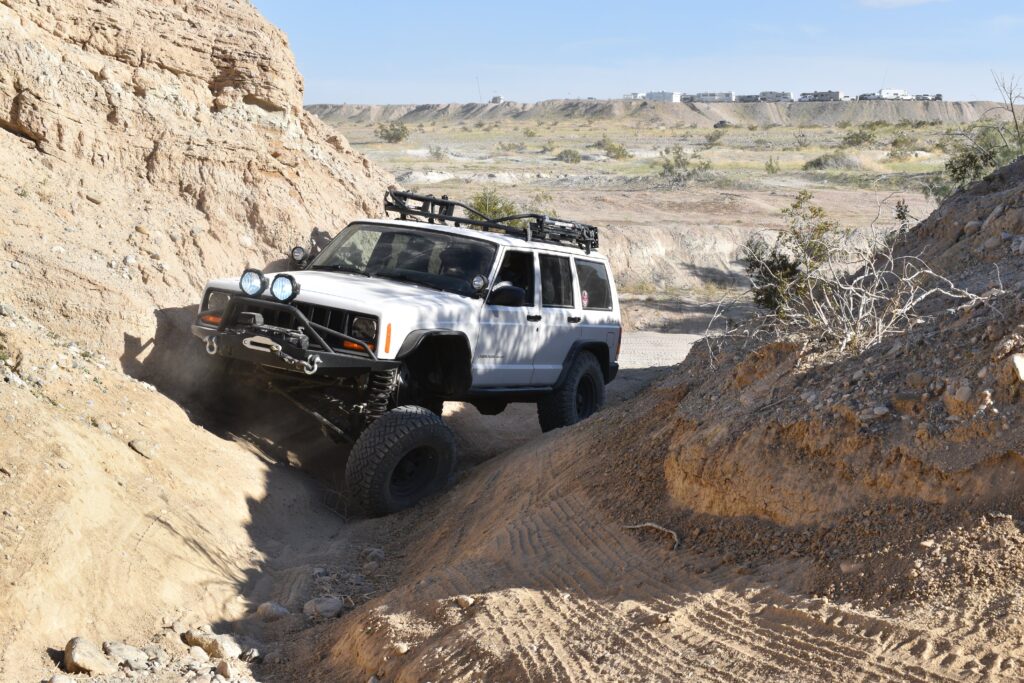
Body lift
One of several types of lifting is a body lift. It involves raising only the body on the frame without changing the position of the suspension itself. We don’t particularly recommend this solution. It raises the vehicle’s center of gravity, and at the same time does not change the characteristics of the suspension itself, making the car start to “sway” more. There could be many more problems, for example, when the bumper is connected to the frame. And that’s just a minor example. Essentially, the only goal of this modification is to increase space for the wheel.
Suspension lift
A much more beneficial solution will be a suspension lift. You have several ways and degrees of complexity of performing such a modification. Below we present you with the division of lifts that we use.
Leveling kit – most often used in pick-up trucks, typically raises only the front of the vehicle, leveling it with the rear.
Using spacers (spacer lift kit) – a simple lift, usually up to 2″. In this case, spacers of the appropriate height are mounted between the body and the suspension’s spring elements (springs, coilovers, leaf springs).
Full lift (suspension kit) – the most complex replacement of suspension components, including the replacement of factory components.
Related articles
Winch, traction boards, and shovels – a helping hand in off-road trouble
Starting your adventure with off-road, it’s also worth taking care of rescue accessories and the company of more experienced enthusiasts who will support the presence of a second car, additional knowledge, or simply invaluable muscle strength. You’ll appreciate this when you get stuck in some trouble, which – let’s agree – is not hard to find in off-roading. Especially when you just start the offroad adventure.
No matter if you eventually move alone or in a team, buying an electric winch powered by a car battery will be useful. You’ll use it, when you bury yourself in snow, sink in mud, or unfortunately stuck in a solid rut. Remember, despite its helpful nature, the winch can actually be a dangerous tool in uneducated hands.
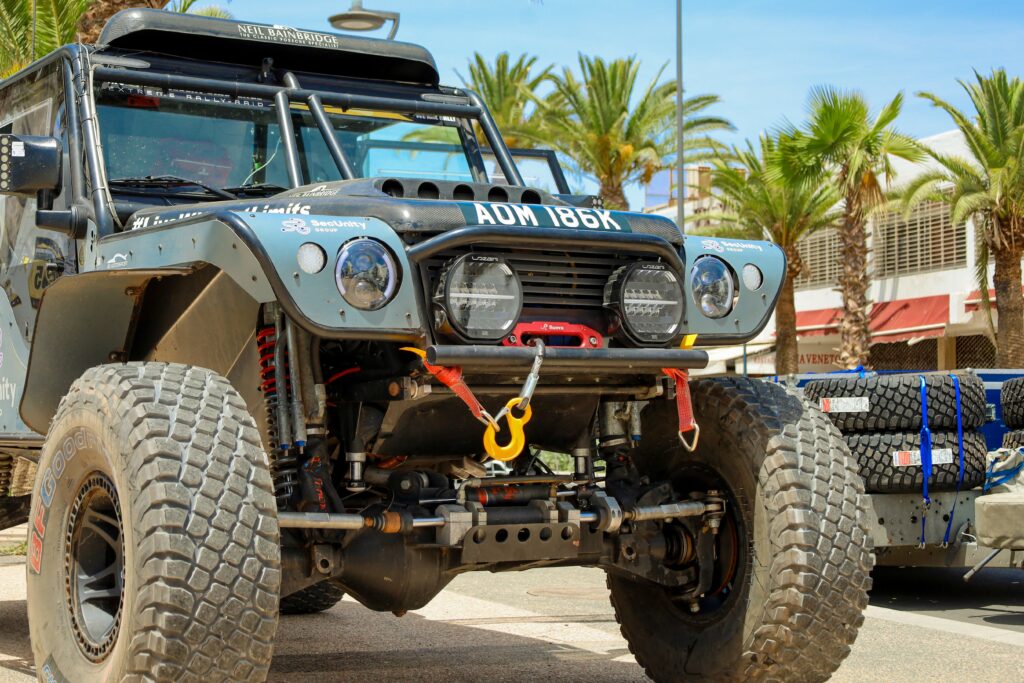
As for the winch itself, you’ll also need a special steel or aluminum plate mounted under the bumper to the frame. Some manufacturers offer bumpers with reinforced top plates, allowing you to mount the winch directly onto them. This will additionally reduce the risk of the winch tearing out during operation. However, there’s still a possibility of tearing off the entire plate, along with the bumper, in certain situations. But let’s save that story for another time.
Either way, that’s not the end, because to dig yourself out of trouble, you’ll also need traction boards. Especially when it turns out that there’s no tree on the horizon you could use, using a winch. The icing on the cake will also be an invaluable, simple, plain shovel. After all, it’s much easier to get out of mud when you’ve cleaned up around the wheel.
Covers – protect what’s important
As they say, better safe than sorry. Therefore, before entering more difficult terrain, it’s worth considering installing guards for those car parts that are most likely to be damaged first. Here we mean, for example, installing an undercarriage or differential cover and buying a reinforced, steel bumper.
Car cover components
In off-roading, the end is the beginning, or a summary of what’s important to start
So, we’ve reached the finish line, where your adventure with off-roading will truly begin. Eventually, in this sport, everything starts where something ends. Enough philosophy, though, it’s time to get down to dirty work and dive into a new passion.
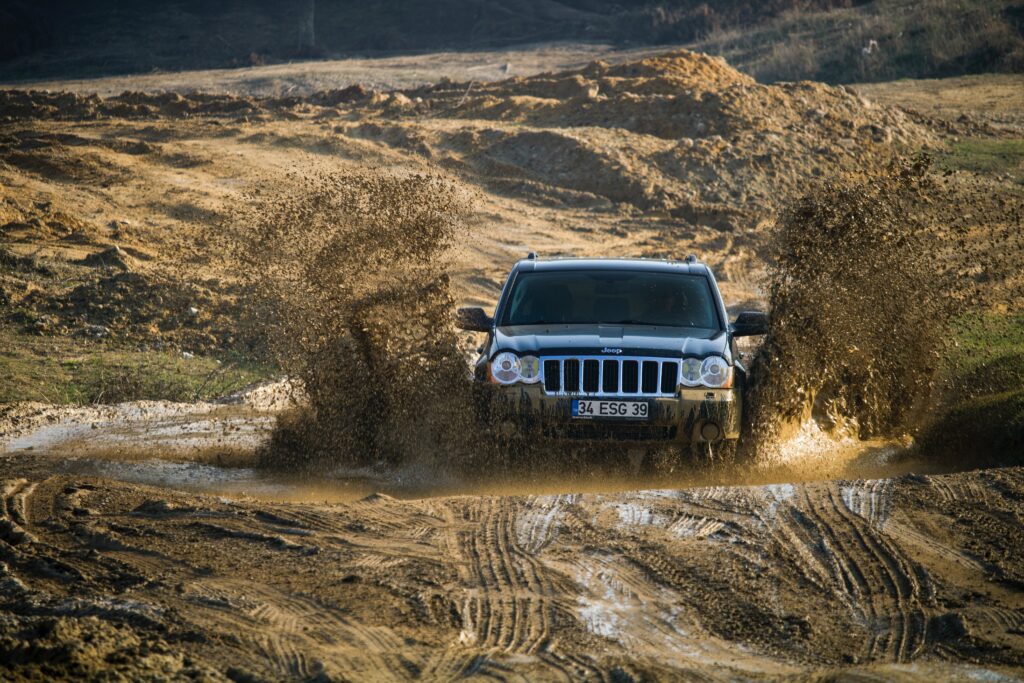
Remember, the most important thing to start is actually choosing the right car. The brand isn’t as important as its characteristics. Classic off-road vehicles with 4×4 drive, mounted on a frame with an additional differential lock and reducer, are best suited for off-roading. Then, tires chosen according to how you use them and a suspension lift. Next, accessories are important, with the winch being key. With such a base, you’re ready to start trying your hand at off-roading.



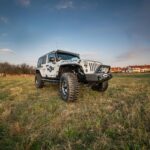
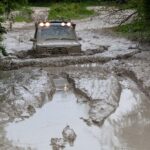





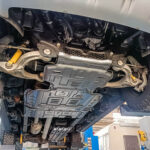

Comments ()